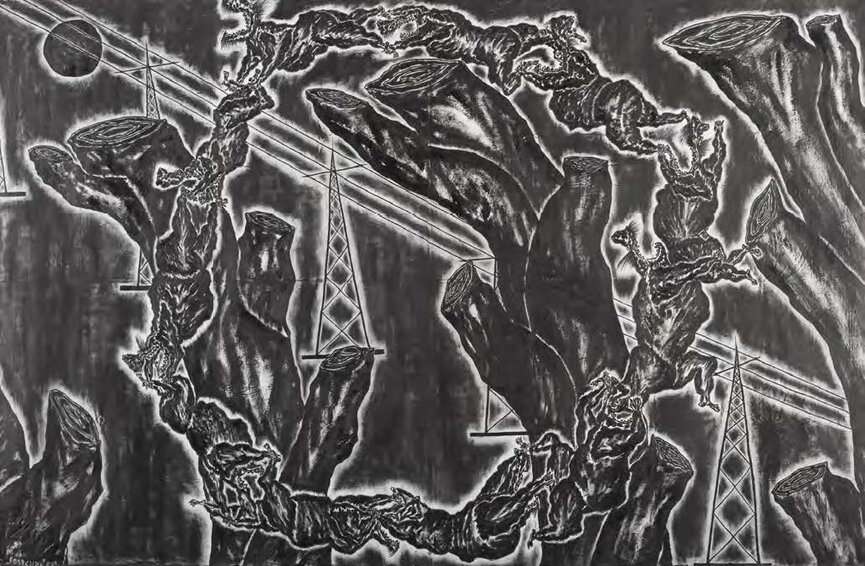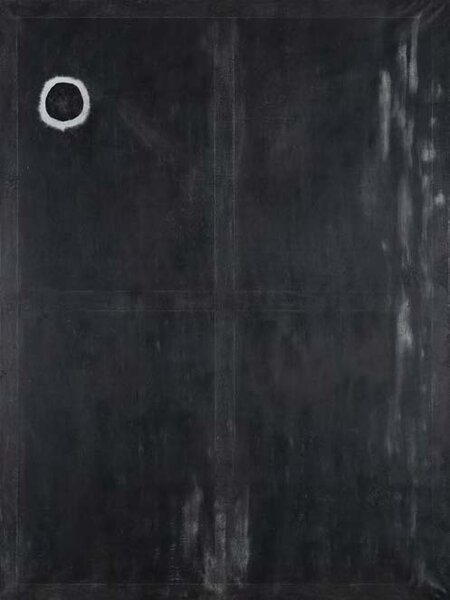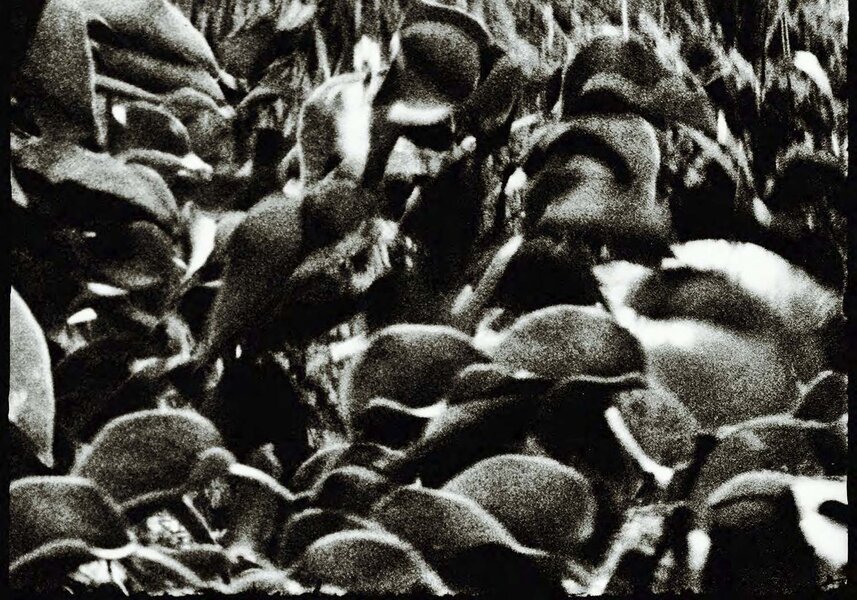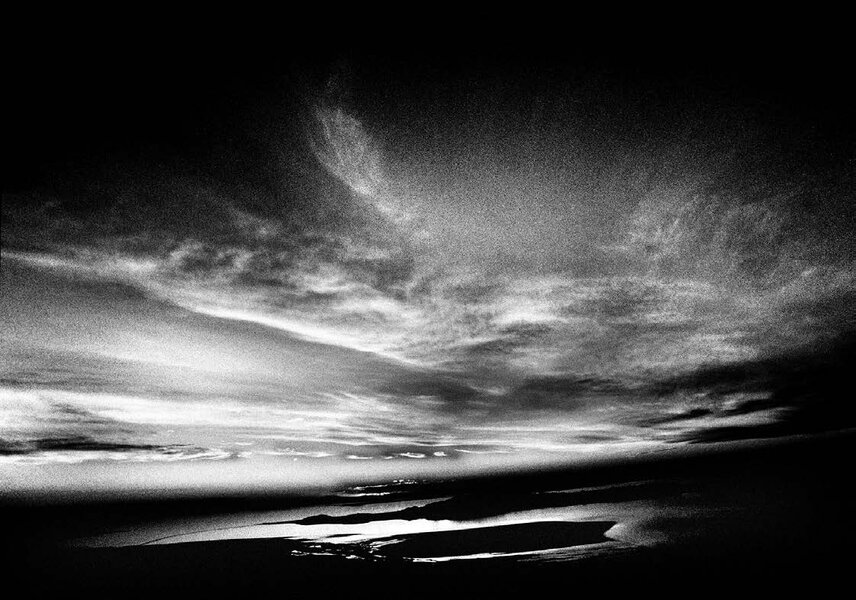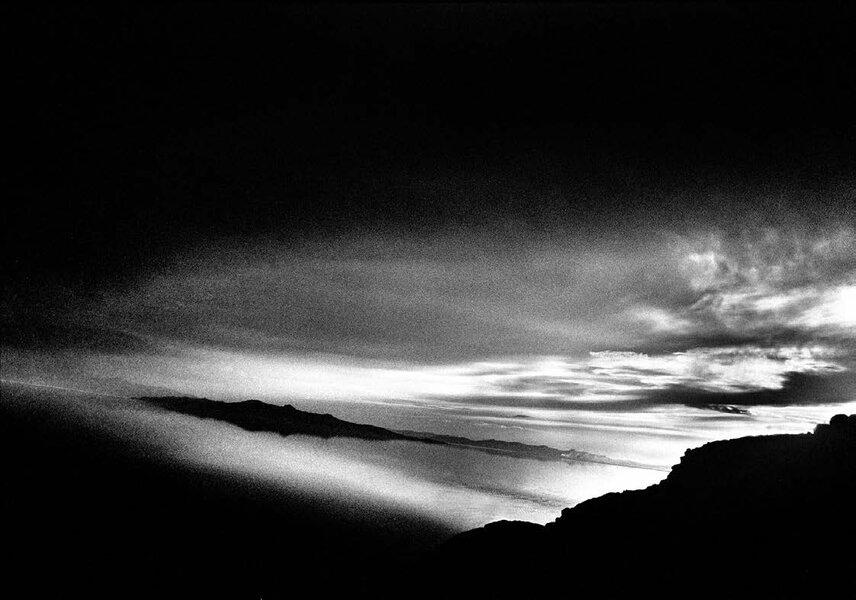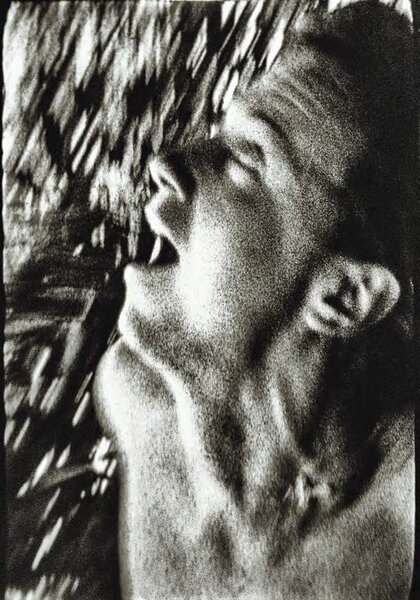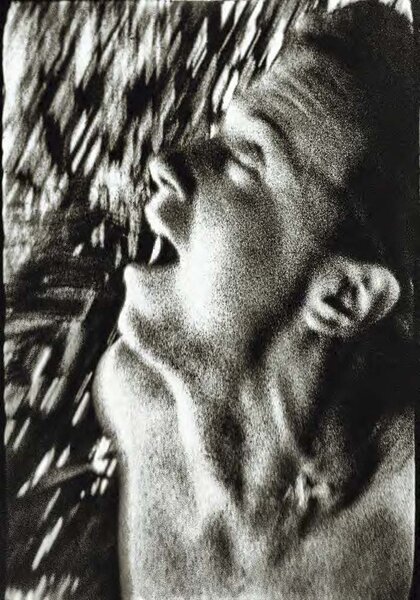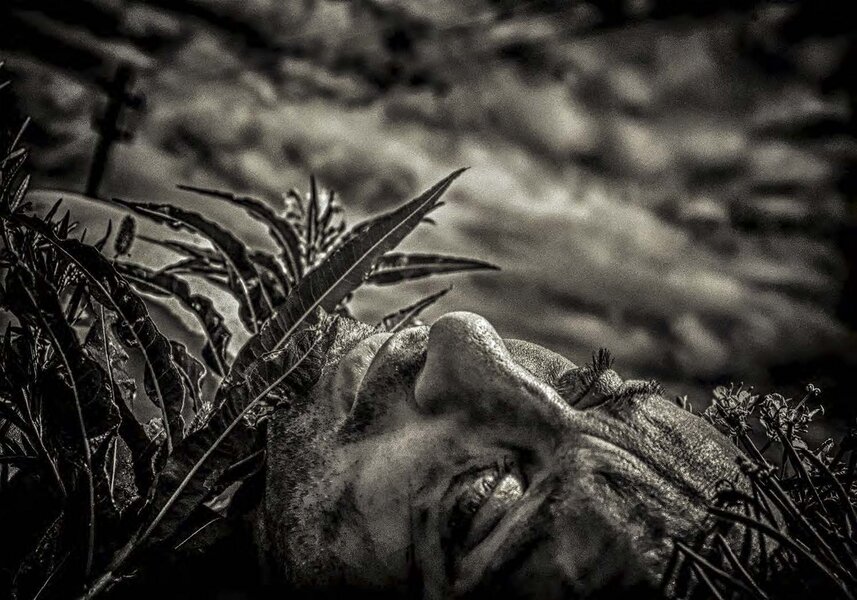Yufit’s first photographs were staged shots of the artist and his colleagues wearing the “zombie” makeup developed by Yufit himself. A combination of bandages, cotton balls, and various kinds of fake blood, this zombie makeup helped the artist achieve the evocativeness of the German expressionist film classics of the 20s and 30s.
Since the late 80s Yufit has taken two cameras, 16mm and 35mm, on his outings into the woods. The first he uses for still photographs. In parallel with the cameraman, Yufit shoots the action himself with a 16mm camera. From amongst thousands of frames, he chooses only a few, enlarging, cropping, and, often, printing them upside down or sideways. The artist thus attempts to reveal the invisible in the play of light and shadow, in the uncanny, suspended position of his subjects. He is an eyewitness. He is a frozen eyewitness, to borrow the title he gave to one of these photographs. He is an eyewitness because the kino/photo-eye creates the fact of reality. He is frozen because photography always remains in the past. Born on the frontier between life and death, black and white, Yufit’s photographs demonstrate the process of the image’s deformation. The artist attains this effect through multiple countertyping — the transfer of the image from a negative to a positive.
In the mid-90s Yufit produced a series of landscapes. In these monochromatic photographs he forms a necro-image of landscapes that arise on the borderline between pathos and pathology, and are seen as if from a bird’s-eye view, as well as of subjects whose autism and ecstatic anticipation of death have transported them beyond the confines of the ordinary. Yufit’s latest photographs, which he has created in parallel with his filmmaking, follow in the tracks of the films. We perceive these photographs as frozen cinema. At the same time, Yufit’s films themselves disintegrate into a sequence of stills.
Olesya Turkina









